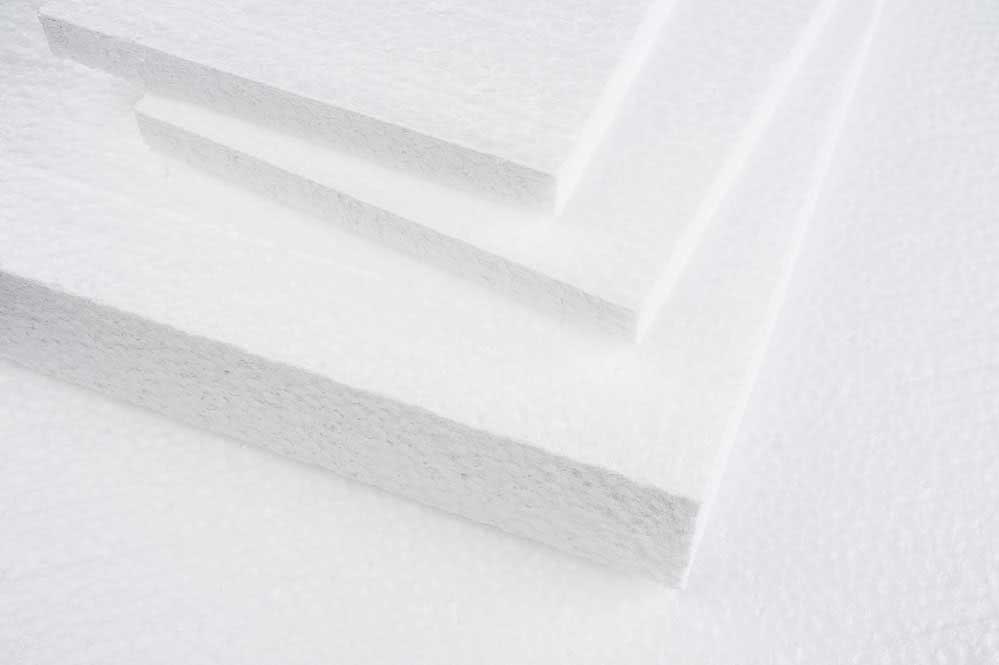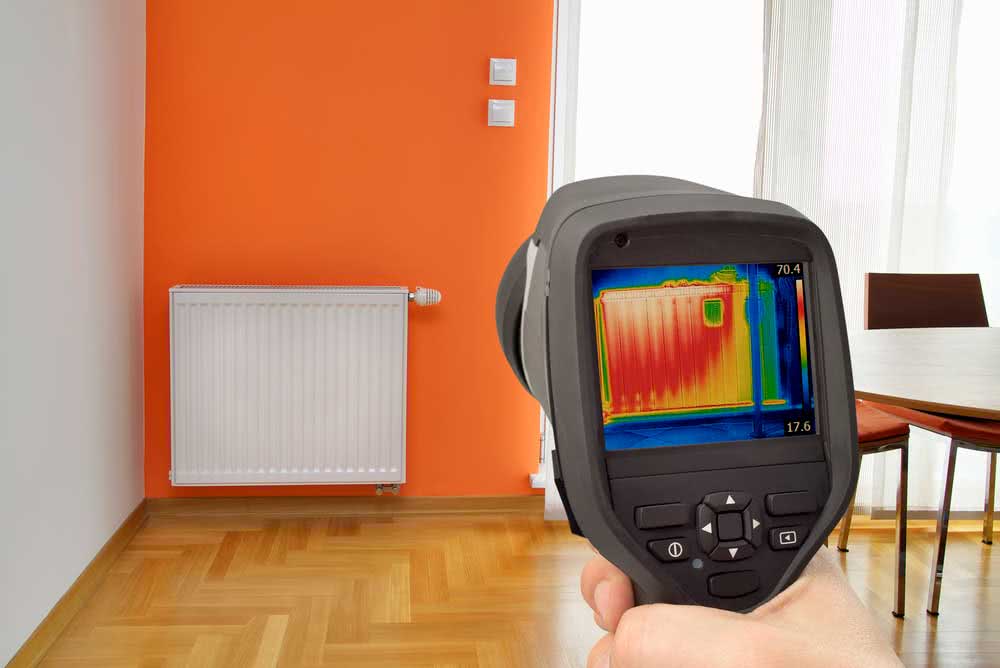Sometimes too hot, sometimes too cold. If your home’s internal temperature doesn’t seem to contribute to your well-being, then it’s time to find out more about thermal insulation.
It is he who will guarantee pleasant nights of sleep and days with mild temperatures, whether summer or winter.
Follow the post with us and discover how thermal insulation can change your life.
What is the isolation thermal?
Thermal insulation is a physical barrier installed between the indoor environment and the outdoor environment.
Made with materials capable of dissipating and/or retaining heat, thermal insulation keeps the internal temperature always pleasant, providing greater comfort and well-being to residents.
Thermal insulation can be used on slabs, roofs, walls and even on the floor, depending on the objective and local thermal conditions (very cold or very hot regions).
The materials most commonly used in thermal insulation are glass wool, polyester wool, ceramic fiber and rock wool.
Thermal insulation can be carried out during the construction process or even after completion of the work, if residents feel this need.
What are the advantages of thermal insulation?
The advantages of thermal insulation are not just limited to temperature control. There are other benefits of this system that extend to residents and even the environment. Check out:
Well being and quality of life
A pleasant temperature environment, neither too hot nor too cold, promotes well-being and quality of life for residents.
Thermal insulation is also responsible for an improvement in respiratory problems such as asthma, rhinitis, sinusitis.
This is because with temperature control, the humidity remains stable, favoring the health of those who inhabit the place.
Sustainability
Another great advantage of thermal insulation is sustainability. With a well-designed and executed system, the need to use air conditioners and heaters significantly decreases and, in some cases, may even become unnecessary.
With this, energy expenditure is reduced, collaborating with the preservation of the environment and the sustainability of the planet.
Prevents moisture
Thermal insulation is also efficient in controlling humidity, keeping it always at adequate levels.
This characteristic reduces the development of mites and prevents the appearance of fungi and mold inside the environments, making them healthier for humans.
Materials used in thermal insulation

Glass wool
Glass wool is widely used in thermal insulation of drywall or masonry tiles and walls.
One of the main advantages of glass wool is its high strength, lightness and excellent thermal conduction, making it one of the best options on the market.
rock wool
Rock wool is used in the thermal insulation of walls. Made from volcanic rock fibers, the material is very resistant to fire, has excellent thermal conduction and can even be used as an acoustic insulator, making it even more functional.
polyester wool
Polyester wool is one of the most versatile on the market. It can be used on walls including drywall, subfloors, ceilings, roof coverings and facades.
Polyester wool is obtained from the recycling process of PET bottles, which makes it a sustainable and ecological material.
Because of this, polyester wool ends up being also known as PET wool.
Polyester wool can be purchased in panels or rolls, in different dimensions and thicknesses.
Another advantage of polyester wool is easy installation.
Ceramic fiber blanket
Ceramic fiber blanket is another thermal insulator option. Manufactured with a mixture of silica and alumina, the ceramic fiber blanket, however, has a more restricted use in industries, although it can also be used in homes.
calcium hydrosilicate
Calcium hydrosilicate is a thermal insulator made from quicklime, silica, cellulose fiber and glass.
The use of this type of insulator is limited to industrial ducts and piping, as they are very resistant to heat and humidity.
How to choose the thermal insulator?

The thermal insulation should be chosen according to the environment and the need for thermal comfort in the home (or commerce).
In general, the lower the thermal conductivity coefficient, the better the thermal comfort provided by the material.
The thermal conductivity coefficient measures how much energy, in the form of heat, is able to pass through the material per second.
Polystyrene, for example, has a conductivity of 0.033, better than fiberglass which has a coefficient of 0.046.
Therefore, the greater the need for thermal comfort, the lower the conductivity coefficient rate should be.
Another important point to be analyzed is the degree of solar incidence in the environments. The more sunlight an environment receives, the warmer it tends to be and, consequently, the reinforcement in thermal insulation needs to be greater.
In general, it is possible to assess the solar incidence based on the geographic position of Brazil on the globe.
The south point, for example, receives less sunlight, while the north point receives a greater amount of sunlight.
The east point, in turn, receives morning light, while the west point receives afternoon light.
Can you use Styrofoam?

Styrofoam is widely recognized as a thermal insulator. But is the material really efficient? Yes.
Expanded polystyrene boards, the technical name of the material, since Styrofoam is the product’s brand, can be used to thermally insulate roofs, walls, ceilings and slabs.
As it is a very light material, Styrofoam is also a great option for those who want to reduce the construction overload.
Do Tetra Park boxes work as a thermal insulator?
Tetra Park boxes, known as long life, have a great performance in thermal comfort, are economical, in addition to being a sustainable and ecological option, since they are made of recycled material.
However, to invest in this idea, it is important to have available time, since assembly is time-consuming.
Another point to be analyzed is the aesthetic issue. Depending on where the material is installed, the appearance may not be the most pleasant.
Thermal insulation for roof
The thermal insulation of the roof starts with the tiles. Choosing tiles that help maintain thermal comfort is a good start.
In this case, a good option is the sandwich type tiles, which have two metallic layers interspersed with a layer of Styrofoam. In addition to thermal comfort, these tiles also bring acoustic comfort.
Ceramic, fiber cement and polyurethane tiles are also efficient in thermal insulation.
The next step is to take care of the thermal insulation on the slab or ceiling, when applicable.
For slabs, it is recommended to install EPS boards, the famous Styrofoam. For linings, whether PVC or wood, the ideal is to have thermal blankets that can be made of rock wool, glass wool or polyester.
Thermal insulation for wall
The best thermal insulation options for walls is rock wool. This material brings a great cost benefit, in addition to also working as an acoustic insulator.
Other options that fit both masonry and drywall walls are fiberglass, EPS boards and polyester wool.
Tips to improve thermal comfort indoors

Even with thermal insulation for the roof and walls, you can still enhance the comfort inside the house with some simple and efficient changes, check out the tips:
- Have plants at home. They help regulate indoor temperature and humidity.
- Green roofs are also effective in thermal insulation for roofs. Despite the higher cost, this is a great alternative from a sustainability point of view.
- Try changing the color of the walls. White, like other light colors, helps to dissipate heat and promote a greater sense of freshness. This goes for both the internal and external walls.
- Likewise, it is also worth avoiding dark colors such as black, especially in hot climates. These colors absorb heat and help make environments more stuffy.
- Light colored furniture and objects have the same effect as the walls. Therefore, it is also worth opting for this type of joinery.
- Vertical gardens are great thermal insulation options for walls. Try, use a structure that fits across the wall and grow a variety of tropical climate plants, such as ferns, for example. They will bring freshness and moisture into the home, and can act in isolation for thermal comfort or as a complement to some other solution.
- Blackout curtains also help to maintain thermal comfort inside the home, preventing direct solar radiation into the rooms.
And then, ready to perform the thermal insulation and make your home pleasant and cozy in summer and winter?



